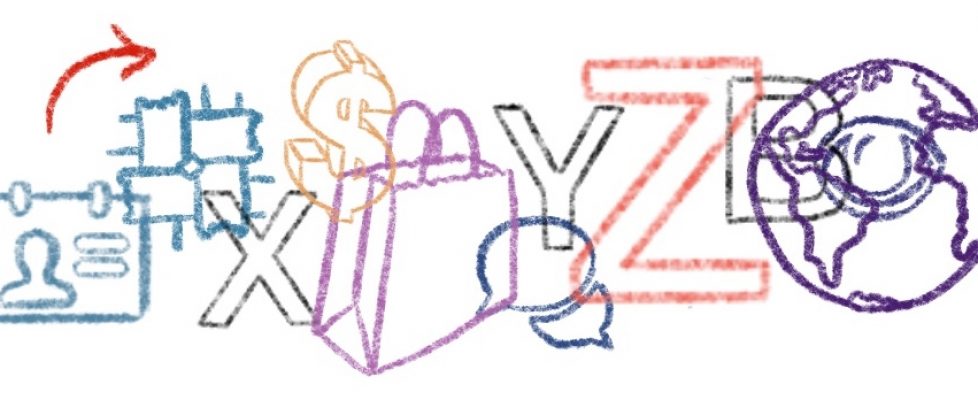People
As people are the force behind all societal and cultural dimensions of our world and are every organisation’s base and building blocks, this week, the pillar People was comprehended. The pillar carries several matters, such as diversity and inclusivity, the new generation of consumers, and the importance of collaboration and cultivating community relations. These are essential for the fashion industry, constructed and dependent on robust human material for its success.
According to McKinsey (2018), Generation Z members, generally described as individuals born between 1995 and 2010, are true digital natives. They are the first generation exposed to the internet and have their behaviours anchored in one characteristic: this generation’s search for truth.

In terms of their characteristics as consumers, McKinsey (2018) indicates that they mainly share three elements companies should focus on; the perception of “consumption as access rather than possession, consumption as an expression of individual identity, and consumption as a matter of ethical concern” (p2). Also, an emphasis on technological advances is required.
It is crucial that businesses rethink transparency, how to offer value while truly practising it, and rebalance scale and mass production against the need for individualism among this generation (McKinsey, 2018).
In terms of pace, marketers should concentrate on delivering their message quickly, as labels lacking immediate impressions will not gain Generation Z’s attention (Mintel, 2017).
According to Moran (2022), other necessary fields for brands to focus on are the ability to resell, sustainability, elevated shopping experience online and in-store, and using secondhand and deadstock. Another element noted was the need to adjust to the economic climate in light of the pandemic, recession and inflation.
As people need a connection to meaningful work, brands face multiple challenges post-pandemic, and numerous people skills are required to succeed. According to Sian Keane, Chief People Officer at Farfetch, elements like; flexibility, agility, self-awareness, relevance, trust and listening to the workforce are mandatory for labels to win the ongoing talent war (The Business of Fashion and McKinsey & Company, 2022).
Since the industry is on a positive trajectory regarding diversity, many examples can be discussed. A classic is Fenty Beauty, executing diversity faultlessly by simply covering the basics – offering a broad range of colours yet to be seen from a beauty brand with campaigns that correspond to this ethos (Fetto, 2020). Art School is another example, offering genderless clothes, a sought-after factor by Gen Z. Another worthy mention involving diverse models is Sinèad O’dwyer and MemoriaDi Agency.

It is worth contemplating whether or not employing more diverse people will lead to more authentic inclusivity, as most brands consider diversity only regarding marketing-based decisions.
Reference list
Art School (2020). Images from Art School Spring 2021 Show. Available at: https://www.elle.com/fashion/a34861030/art-school-spring-2021/#sidepanel (Accessed 15 October 2022).
Fenty Beauty (2019). Fenty Beauty’s 50 Shades of Foundation Campaign. Available at: https://www.thinkwithgoogle.com/intl/en-gb/future-of-marketing/management-and-culture/diversity-and-inclusion/how-rihannas-fenty-beauty-delivered-beauty-for-all-and-a-wake-up-call-to-the-industry/ (Accessed 15 October 2022).
Fetto, F. (2020). How Fenty Beauty Changed The State Of Play In The Industry. Available at: https://www.vogue.co.uk/beauty/article/rihanna-fenty-beauty-diversity (Accessed 15 October 2022).
McKinsey (2018). ‘True Gen’: Generation Z and its implications for companies. Available at: https://www.mckinsey.com/~/media/McKinsey/Industries/Consumer%20Packaged%20Goods/Our%20Insights/True%20Gen%20Generation%20Z%20and%20its%20implications%20for%20companies/Generation-Z-and-its-implication-for-companies.pdf (Accessed 15 October 2022).
Mintel (2017) Marketing to the iGeneration – US – May 2017. Available at: https://reports-mintel-com.arts.idm.oclc.org/display/832677/?fromSearch=%3Ffreetext%3Dgen%2520z%2520attention%2520span%26resultPosition%3D9 (Accessed: 15 October 2022).
Memoria Di Casting & Management (2022) Recent Work [Instagram]. Available at: https://www.instagram.com/memoriadi.nyc/ (Accessed: 15 October 2022).
Moran, G. (2022). Gen Z and Millennials 2022. Available at: https://www.drapersonline.com/guides/gen-z-and-millennials-2022 (Accessed 15 October 2022).
Sinéad O’Dwyer (2022) SS23 Show [Instagram]. Available at: https://www.instagram.com/sjodwyer/ (Accessed: 15 October 2022).
The Business of Fashion and McKinsey & Company (2022). The State of Fashion 2022. Available at: https://moodle.arts.ac.uk/pluginfile.php/1463744/mod_label/intro/The_State_of_Fashion_2022.pdf?time=1664132324542 (Accessed 15 October 2022).
Think with Google (2019). How Rihanna’s Fenty Beauty delivered a wake-up call to the industry. 14 June. Available at: https://www.youtube.com/watch?v=ubHt-vmIqhg&t=50s&ab_channel=ThinkwithGoogle. (Accessed 15 October 2022).
